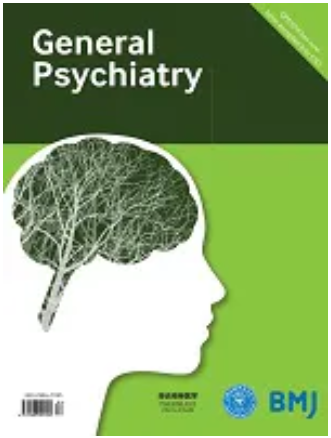MicroRNA-451a is a candidate biomarker and therapeutic target for major depressive disorder
IF 5.3
3区 医学
Q1 PSYCHIATRY
引用次数: 0
Abstract
Background Increasing evidence supports the role of microRNAs (miRNAs) in major depressive disorder (MDD), but the pathophysiological mechanism remains elusive. Aims To explore the mechanism of microRNA-451a (miR-451a) in the pathology and behaviours of depression. Methods Abnormal miRNAs such as miR-451a reported previously in the serum of patients with MDD were screened and then confirmed in a mouse model of depression induced by chronic restraint stress (CRS). Eight-week-old male C57BL/6 mice had miR-451a overexpression in the medial prefrontal cortex (mPFC) via adeno-associated virus serotype 9 vectors encoding a pri-mmu-miR-451a-GFP fusion protein followed by behavioural and pathological analyses. Finally, molecular biological experiments were conducted to investigate the potential mechanism of miR-451a against depression. Results The serum levels of miRNA-451a were significantly lower in patients with MDD, with a negative correlation with the Hamilton Depression Scale scores. Additionally, a negative association between serum miR-451a and behavioural despair or anhedonia was observed in CRS mice. Notably, miR-451a expression was significantly downregulated in the mPFC of CRS-susceptible mice. Overexpressing miR-451a in the mPFC reversed the loss of dendritic spines and the depression-like phenotype of CRS mice. Mechanistically, miR-451a could inhibit CRS-induced corticotropin-releasing factor receptor 1 expression via targeting transcription factor 2, subsequently protecting dendritic spine plasticity. Conclusions Together, these results highlighted miR-451a as a candidate biomarker and therapeutic target for MDD. Data are available upon reasonable request.MicroRNA-451a 是重度抑郁障碍的候选生物标志物和治疗靶点
背景 越来越多的证据支持微RNA(miRNA)在重度抑郁障碍(MDD)中的作用,但其病理生理机制仍然难以捉摸。目的 探讨微RNA-451a(miR-451a)在抑郁症病理和行为中的作用机制。方法 筛选先前报道的 MDD 患者血清中的异常 miRNA,如 miR-451a,然后在慢性束缚应激(CRS)诱导的抑郁症小鼠模型中进行证实。八周大的雄性 C57BL/6 小鼠通过编码 pri-mmu-miR-451a-GFP 融合蛋白的 9 号血清型腺相关病毒载体在内侧前额叶皮层(mPFC)过表达 miR-451a,然后进行行为和病理分析。最后,还进行了分子生物学实验,研究 miR-451a 抗抑郁的潜在机制。结果 MDD 患者血清中的 miRNA-451a 水平明显较低,与汉密尔顿抑郁量表评分呈负相关。此外,在 CRS 小鼠中观察到血清 miR-451a 与行为绝望或失神之间存在负相关。值得注意的是,在 CRS 易感小鼠的 mPFC 中,miR-451a 的表达明显下调。在mPFC中过表达miR-451a可逆转CRS小鼠树突棘的缺失和抑郁样表型。从机制上讲,miR-451a 可通过靶向转录因子 2 抑制 CRS 诱导的促肾上腺皮质激素释放因子受体 1 的表达,从而保护树突棘的可塑性。结论 综上所述,这些结果突显了 miR-451a 是 MDD 的候选生物标记物和治疗靶点。如有合理要求,可提供相关数据。
本文章由计算机程序翻译,如有差异,请以英文原文为准。
求助全文
约1分钟内获得全文
求助全文
来源期刊

General Psychiatry
医学-精神病学
CiteScore
21.90
自引率
2.50%
发文量
848
期刊介绍:
General Psychiatry (GPSYCH), an open-access journal established in 1959, has been a pioneer in disseminating leading psychiatry research. Addressing a global audience of psychiatrists and mental health professionals, the journal covers diverse topics and publishes original research, systematic reviews, meta-analyses, forums on topical issues, case reports, research methods in psychiatry, and a distinctive section on 'Biostatistics in Psychiatry'. The scope includes original articles on basic research, clinical research, community-based studies, and ecological studies, encompassing a broad spectrum of psychiatric interests.
 求助内容:
求助内容: 应助结果提醒方式:
应助结果提醒方式:


